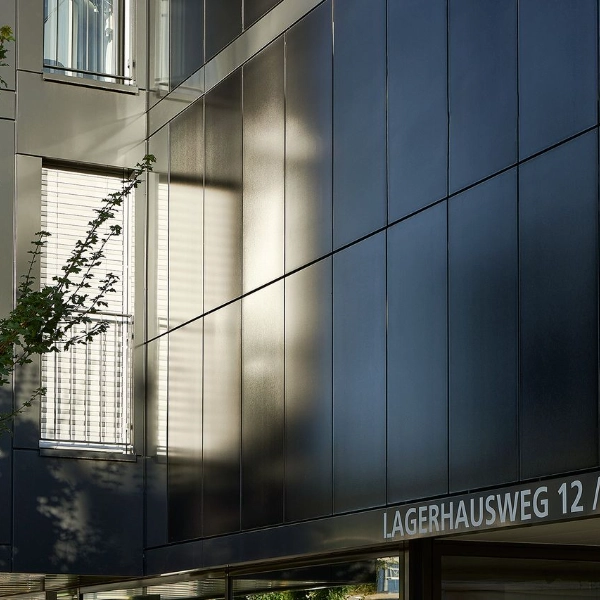As the construction industry moves toward green and low-carbon development, building-integrated photovoltaic systems are becoming an integral part of modern architectural design. BIPV not only ensures energy self-sufficiency but also offers aesthetic and environmental benefits. Its application on building facades, in particular, seamlessly integrates energy conservation and design. However, choosing the right BIPV facade system for your project remains a crucial challenge for many architects, developers, and project managers. This article provides a detailed guide to selecting a BIPV facade system, encompassing various aspects including functionality, materials, design, performance, and cost.
1. Types of BIPV Facade Systems
Before selecting a BIPV facade system, it's important to first understand its main types. Based on different materials and installation methods, BIPV facade systems can be broadly categorized as follows:
Glass-Glass PV Curtain Wall
Features: PV panels are enclosed between two layers of glass, resulting in high transparency and strength, making them suitable for modern office and commercial buildings.
Advantages: Aesthetically pleasing, weather-resistant, and easy to clean, with the ability to achieve translucent or semi-translucent effects.
Applications: Facades of large commercial complexes, hotels, and office buildings. Thin-Film PV Facade
Features: Made of flexible thin film material, it can be directly adhered to building surfaces.
Advantages: Lightweight, bendable, and adaptable to complex facade shapes.
Applications: Special-shaped buildings, curved walls, or building renovations.
Crystalline Silicon PV Facade
Features: Utilizes high-efficiency crystalline silicon photovoltaic panels, typically in the form of rigid modules.
Advantages: High photoelectric conversion efficiency and long service life.
Applications: Building projects with high energy output requirements.
Semi-Transparent PV Facade
Features: Combines daylighting and power generation, often used in integrated window-wall designs.
Advantages: Improves indoor lighting while providing significant power output.
Applications: Office buildings, commercial buildings, and public facilities.
Different types of BIPV facade systems are suitable for different architectural styles and project requirements. Therefore, before selecting a system, it is important to clearly define the required functions based on the project's objectives.
2. Clarify Project Requirements and Design Goals
The first step in selecting a BIPV facade system is to clarify the overall project requirements and design goals. BIPV system requirements vary significantly depending on building type and function:
Building Type
Commercial office buildings: These typically have high requirements for energy efficiency and aesthetics. BIPV systems must not only provide significant power generation but also maintain a visually appealing facade.
Industrial plants: These prioritize energy efficiency and affordability, with relatively lower requirements for appearance.
Residential buildings: These emphasize integration with the overall architectural style while also considering resident safety and comfort.
Power Generation Requirements
Does the project aim to achieve partial or even full energy self-sufficiency through BIPV? If power generation is the core objective, focus on module efficiency, system layout, and optimized orientation.
Building Codes and Policy Requirements
Building energy efficiency standards and PV installation regulations vary across regions. Before selecting a BIPV system, it's important to verify local building codes, fire regulations, and renewable energy incentives to ensure the system complies with regulations.

3. Consider Building Compatibility and Structural Design
A BIPV system is not only an energy source but also part of a building's curtain wall. Therefore, building compatibility is crucial:
Building Structural Load-Bearing Capacity
BIPV modules and supporting structures add weight to the building's exterior walls. Before selecting a system, assess the building's structural load-bearing capacity to ensure safety.
Installation Methods
Curtain Wall Mounted: Modules are attached to the building's exterior wall via a hanger. Suitable for new construction or renovation projects.
Integrated into the Wall: Blends directly into the building's exterior wall for optimal visual impact, but also increases construction complexity.
Different installation methods affect construction time, cost, and ease of maintenance.
Waterproofing and Airtightness
BIPV curtain walls must prevent rainwater from penetrating the building while meeting wind pressure and airtightness requirements. System design should consider sealing strips, bracket design, and drainage methods.
Thermal Expansion and Structural Movement
Building exterior walls expand and contract due to temperature fluctuations. BIPV systems must allow for sufficient movement of modules and brackets to avoid cracks or damage.
4. Aesthetic Design and Architectural Integration
The visual impact of a BIPV facade system directly impacts the overall image of a building:
Module Color and Appearance
PV modules come in a variety of colors, including blue, black, and translucent glass, and can be selected based on the architectural style. For high-end office buildings or hotels, uniform black or darker modules blend more easily with the building facade.
Modularity and Customization
The modular design accommodates varying curtain wall sizes and shapes, while custom-sized modules can better fit complex building facades.
Lighting Effects and Daylighting Design
Translucent modules or specialized arrangements can create playful light and shadow effects, adding a touch of architectural design while enhancing the indoor natural light environment.
5. Supplier Selection and Technical Support
A high-quality BIPV system relies not only on the modules themselves but also on the supplier's technical capabilities and service level:
Supplier Qualifications and Experience: Select a manufacturer with extensive BIPV project experience who can provide complete system solutions, including design, construction guidance, and after-sales service.
System Integration Capabilities: Excellent suppliers can provide integrated solutions, including modules, mounting brackets, and inverters, reducing compatibility issues and construction risks. After-sales service and warranty: A 25-year or longer module warranty and 5-year or longer system maintenance service are key considerations when selecting a BIPV supplier, ensuring the long-term, safe, and stable operation of the project.
A BIPV facade system is not only an energy device but also a crucial component of architectural design. Choosing a system wisely and rationally not only saves energy and reduces carbon emissions, but also enhances the building's aesthetics and value. With the trend towards green and zero-carbon buildings, the right BIPV facade system is crucial for the success of a project.
As a professional BIPV system supplier, FGNEX SOLAR not only provides efficient and durable photovoltaic modules but also offers customized curtain wall integration solutions tailored to the needs of various building projects. Whether it's a commercial office building, residential building, or industrial plant, FGNEX SOLAR offers a comprehensive service process, from design consultation and system integration to installation guidance, ensuring the BIPV facade system achieves optimal aesthetics, power generation efficiency, and safety, helping buildings achieve green, energy-saving, and sustainable development.
www.fgnexsolar.com
fgnexsolar

